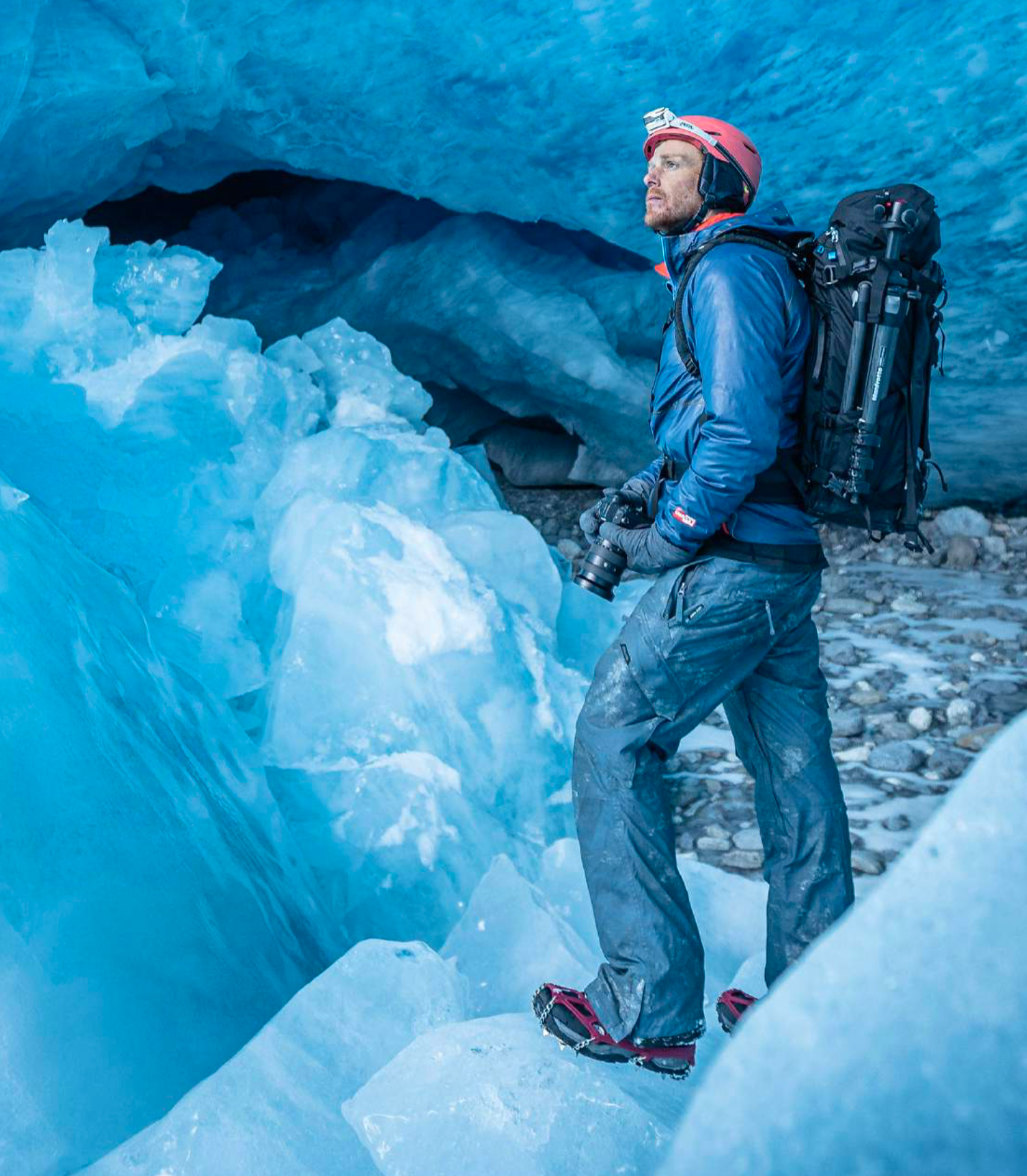
Arctic traveling with the FJORD 60-C
Arctic traveller Ash Routen gives us the lowdown on how he stays safe and comfortable in sub-zero temperatures and what he thought of the FJORD 60-C.

Most people picture Polar explorers as grizzly bearded men shivering as they inch across a barren windswept icecap. The reality is quite different. If you prepare well, there’s no reason why you can’t be comfortable.
I’ve been learning the dark arts of operating in deep cold. This has taken me across the Arctic Circle in Norway, and over the world’s largest frozen lake in Siberia. Next year I’ll be skiing across sea ice in the Arctic for forty days.
For generations, Arctic natives have pulled sledges, often with the help of dogs, to travel large distances. And that’s exactly what I do on an expedition – I fill my sledge with a cooking stove, fuel, food, clothing, sleeping bag, tent, medical kit, repair kit, and electronics.

The most important bit of kit to look after is your body. Keeping warm is quite straightforward. Indeed if you dress right, pulling a sledge full of gear generates sweat! If this happens you lose heat much more quickly, so it’s a fine balancing act of staying a little cooler than warm.
Just like an onion, polar adventurers layer clothing. The first layer is a pair of thermal leggings and top. The next, the ‘mid-layer’, should be a medium weight fleece top that is long enough to cover your bum and is loose. Tight clothing doesn’t let the body ventilate when you’re working hard.

That’s chest and legs covered with soft warm fabric. But while air temperature hits well below zero in the Polar Regions, it’s wind chill that really makes you cold. So, an outer pair of windproof Salopette trousers are required. Similar to those skiers wear on the slopes of the Alps, but a bit thicker and with a zips on the side to allow you to drop your trousers and do your toilet duties in double quick time!
This super stylish outfit is topped off with a large windproof jacket, long in length and with a good hood. Some people use a natural fur ruff, like coyote, to keep their face sheltered. To keep the neck area protected, a fleece warmer can be used. Don’t forget sunglasses/goggles to protect the eyes from the UV radiation reflected by snow and ice!

The extremities are up next. A windproof hat with earflaps and a peak works best to protect the head. When the wind picks up the hood can be used too. Some people feel the cold on their hands more than others. If you’re working hard you can ski barehanded at -15 degrees. On still days, most Polar adventurers wear thin synthetic gloves, as warm blood flow from the rest of the body keeps the hands in check.
When the wind picks up or temperatures really drop, a thicker second layer windproof glove goes over the top. Colder still, a pair of large over mitts can be added. This insulates the capillaries in the wrist that feed your hand, and keeps fingers closer together. Don’t make the mistake of putting lots of fingered gloves on top of one another. This separates the fingers so they can’t share heat.

Last but not least are the feet. A pair of good quality snow/ski boots are needed. Mukluk style boots with leather outers, thick rubber soles and a fur liner are often worn in the Arctic. Top this off with one or two layers of thick sock. When it really cold Polar travellers also wear something called a vapor barrier liner. These are sealed plastic bags worn against the skin to stop sweaty socks freezing. Sounds disgusting but it can save your feet in the minus twenties and below.
Once you’ve got all of that on it’s a constant dance of fiddling with layers to make sure you’re a comfortable temperature - patience is needed, but you’ll be unlikely to lose any toes or fingers!

5 Top Tips for Dressing for the Cold
- When moving in the cold, don’t over-dress. Sweat and moisture is the enemy.
- Wear thermal base layers. Synthetic tights from your local supermarket will do the job fine.
- When it’s cold and dry you won’t have to worry about rain, so windproof outer shell clothing (jacket, trousers, hat, gloves) is the way to go.
- If your hands start getting cold, don’t pile on fingered gloves, use mitts.
- If you’re travelling across snow or ice, wear sunglasses or snow goggles at all times.

Photography is the best way to tell the story to those back home and for this last trip I took the Fjord 60-C. In the past I’ve stowed my camera in my sledge, or in a light pack. So when given he chance to test out a camera-specific pack designed for rugged adventures, I was keen.
The pack performed really well. It’s super tough so I could be heavy handed, which is useful, as you don’t want to hang around in the cold. The biggest plus was the padded insert, which is accessible via a zip on the back. That feature saved me so much time, and the insert did a great job at protecting my camera and lenses. Most importantly, my camera gear was well protected from the cold.
- Ash Routen
Leave a comment
Comments will be approved before showing up.





